Restoration of ‘Theatrum Orbis Terrarum’
Oliver Claes has now been working as a paper and book conservator for more than a decade and is currently in charge of the conservation of the topographical and historical book collection from The Phoebus Foundation collection. For the last couple of months, Oliver’s work included the restoration of Abraham Ortelius’ sixteenth-century masterpiece Theatrum Orbis Terrarum.
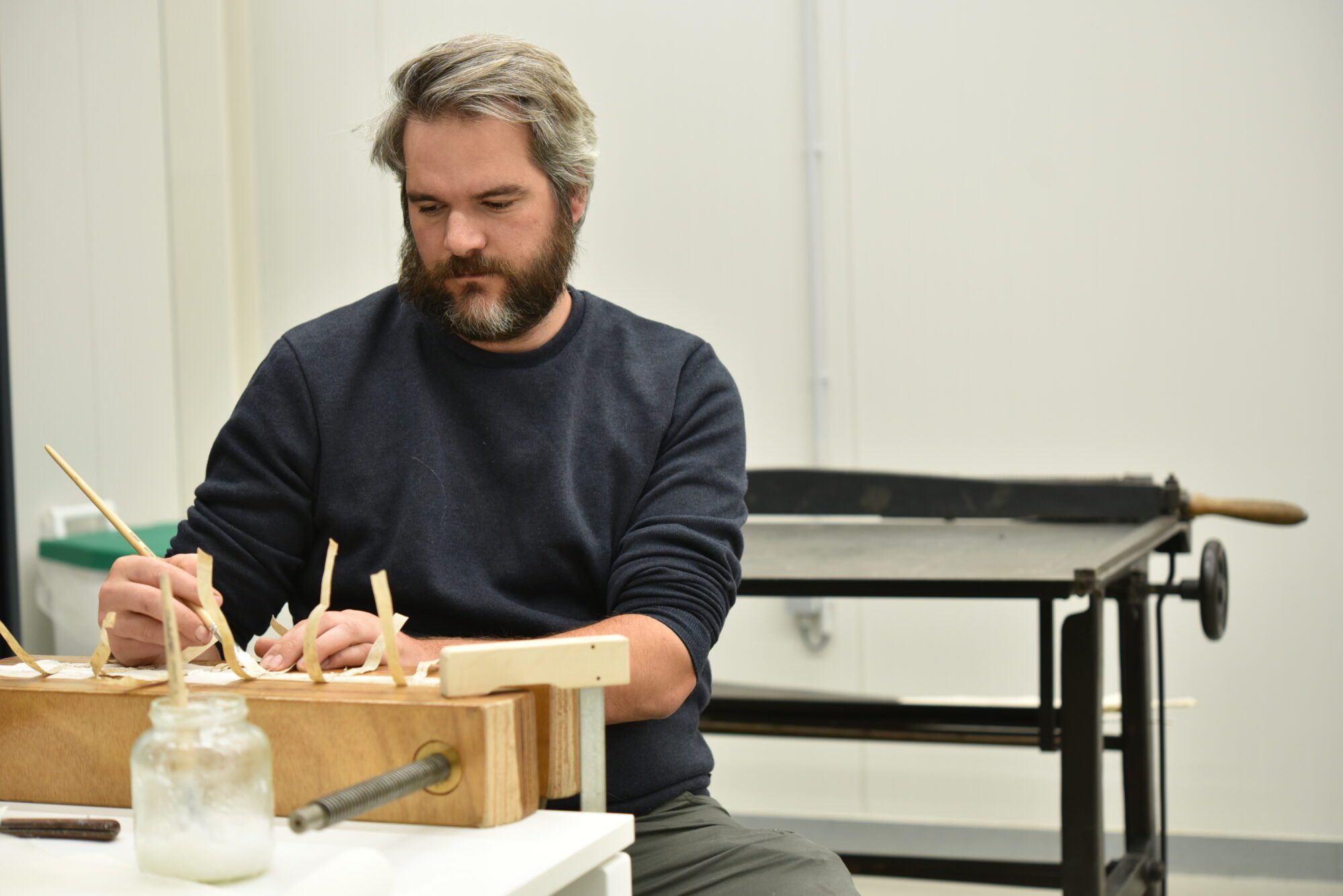
“The Theatrum Orbis Terrarum (‘theatre of the world’) is the very first world atlas, published on the 20th of May 1570. The volume was created by the Antwerp-native Abraham Ortelius (1527-1598) and published by Gillis Coppens I. Ortelius compiled the best and most reliable maps of his time into one volume. A unique feature of it is that all the maps were engraved in the same style and size on copper plates, and were arranged by continent, region and state. This ensured that the atlas remained popular for decades and was even translated into other languages.”
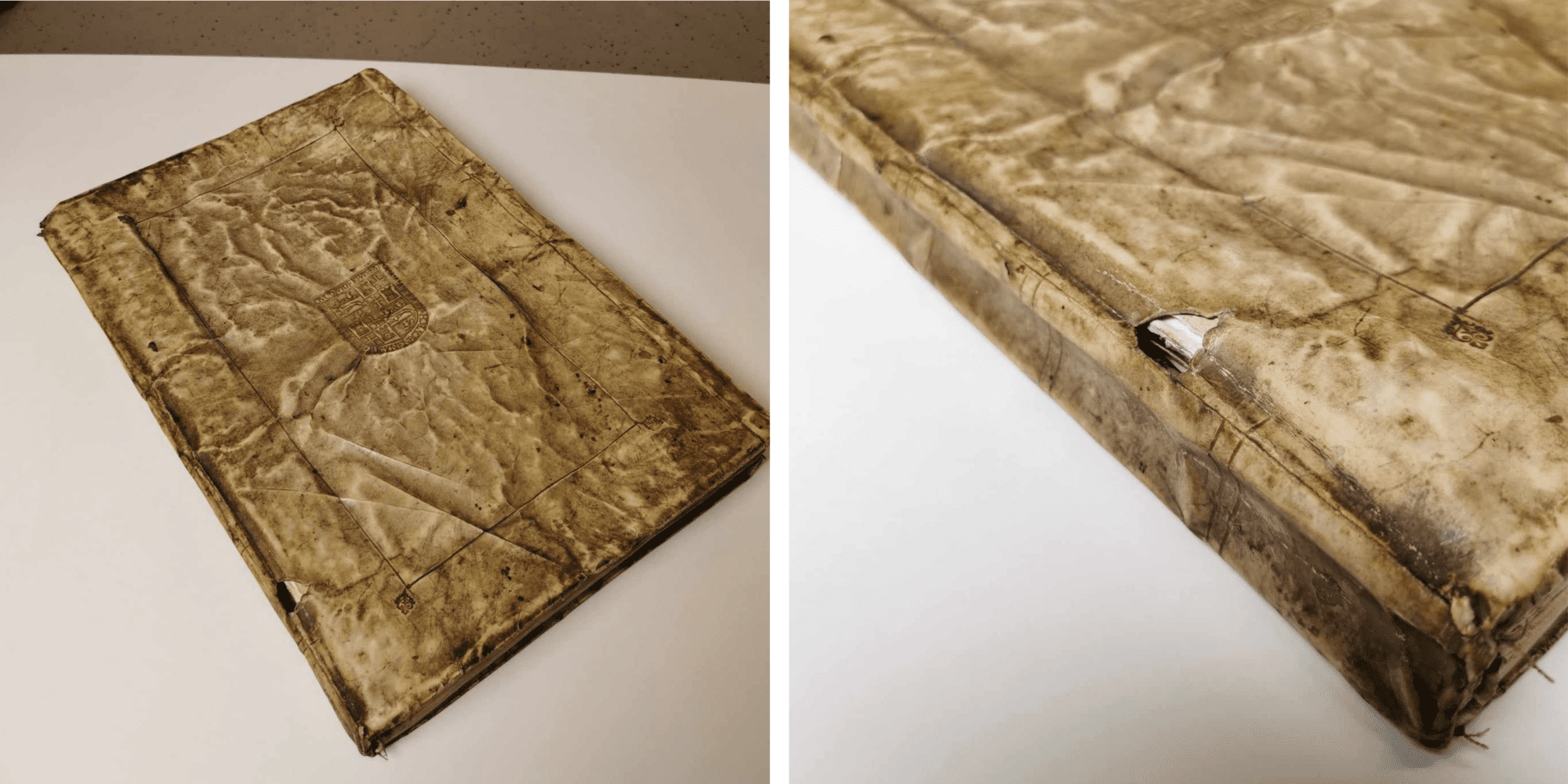
“The condition of the book was very poor. The book block (the collection of quires) was very soiled, and the binding distorted. Moreover, it had also come loose, and the various quires revealed multiple damages and gaps. The binding made of parchment was broken and could no longer fulfil its role of protecting the book block. Furthermore, the sturdiness that a binding should provide to the book block had completely disappeared due to the lack of sturdy cartons. Upon opening the book, the fragile and coloured title page immediately became visible.”
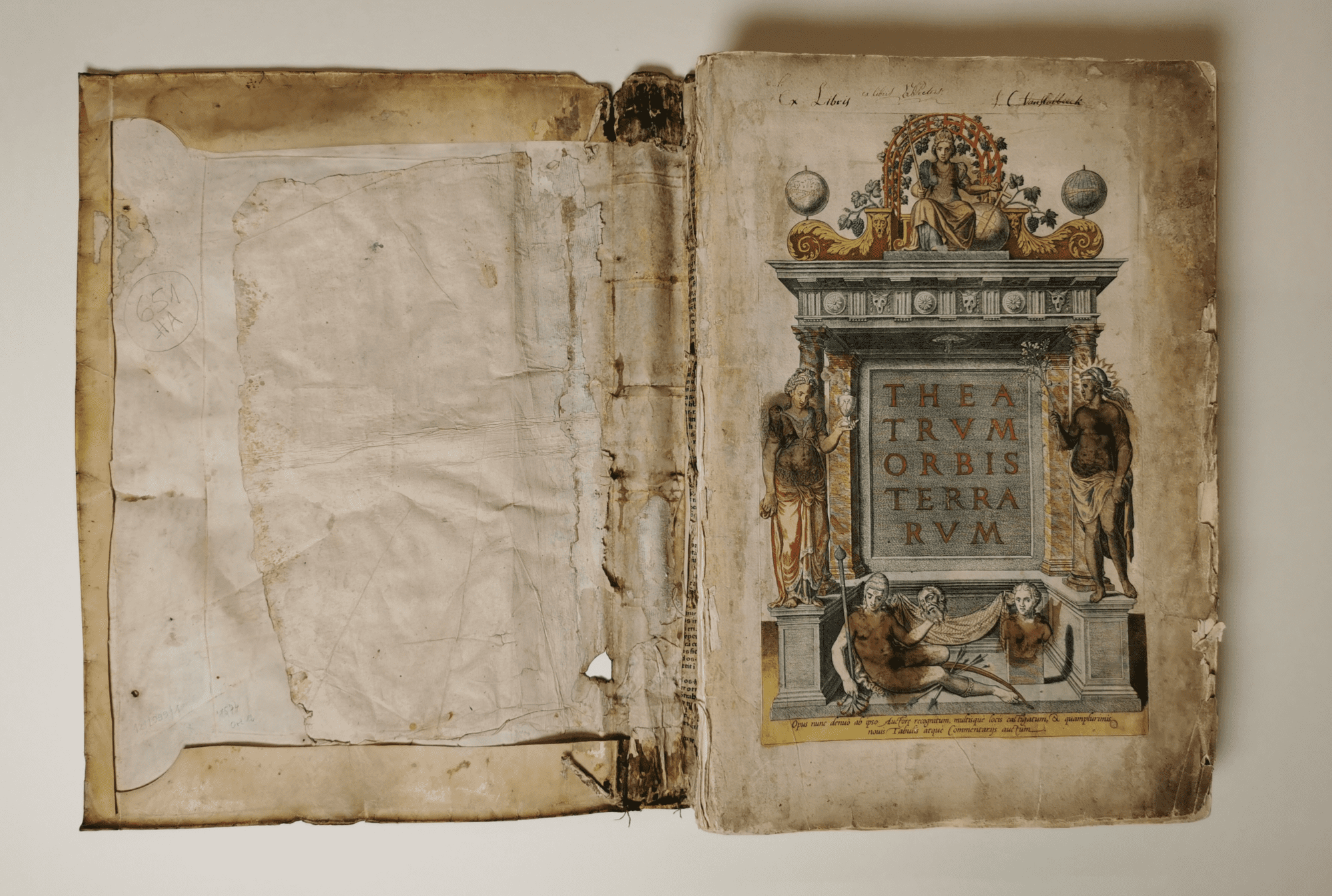
“The outline of the restoration was a thorough cleaning of all parts, filling in and reinforcing the book’s binding and strengthening it. For this, the book had to be completely dismantled. All the quires were reinforced piece by piece with Japanese or Western paper (and starch glue).”
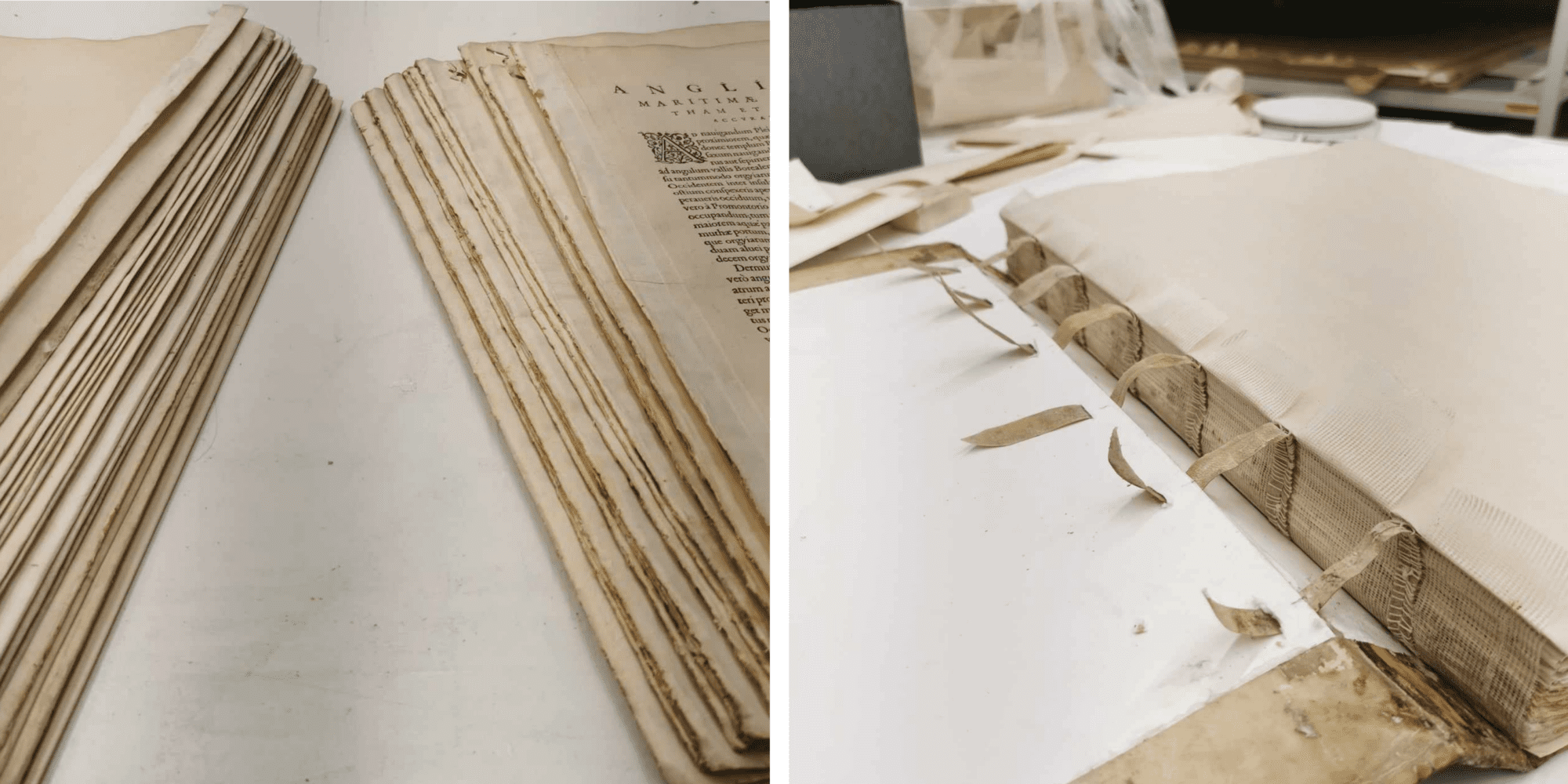
“Afterwards, all the quires were similarly bound with twine on parchment strips. The title page was also cleaned, completed and retouched. A fun finding during the restoration of this book was that a drawn “little man” was discovered on the inside of the parchment folded over the cardboard (of the book binding). Presumably, this was a personal addition by the bookbinder.”


“The vellum of the book binding was repaired with similar vellum and the lost cartons (covers) were filled in with acid-free cardboard.”
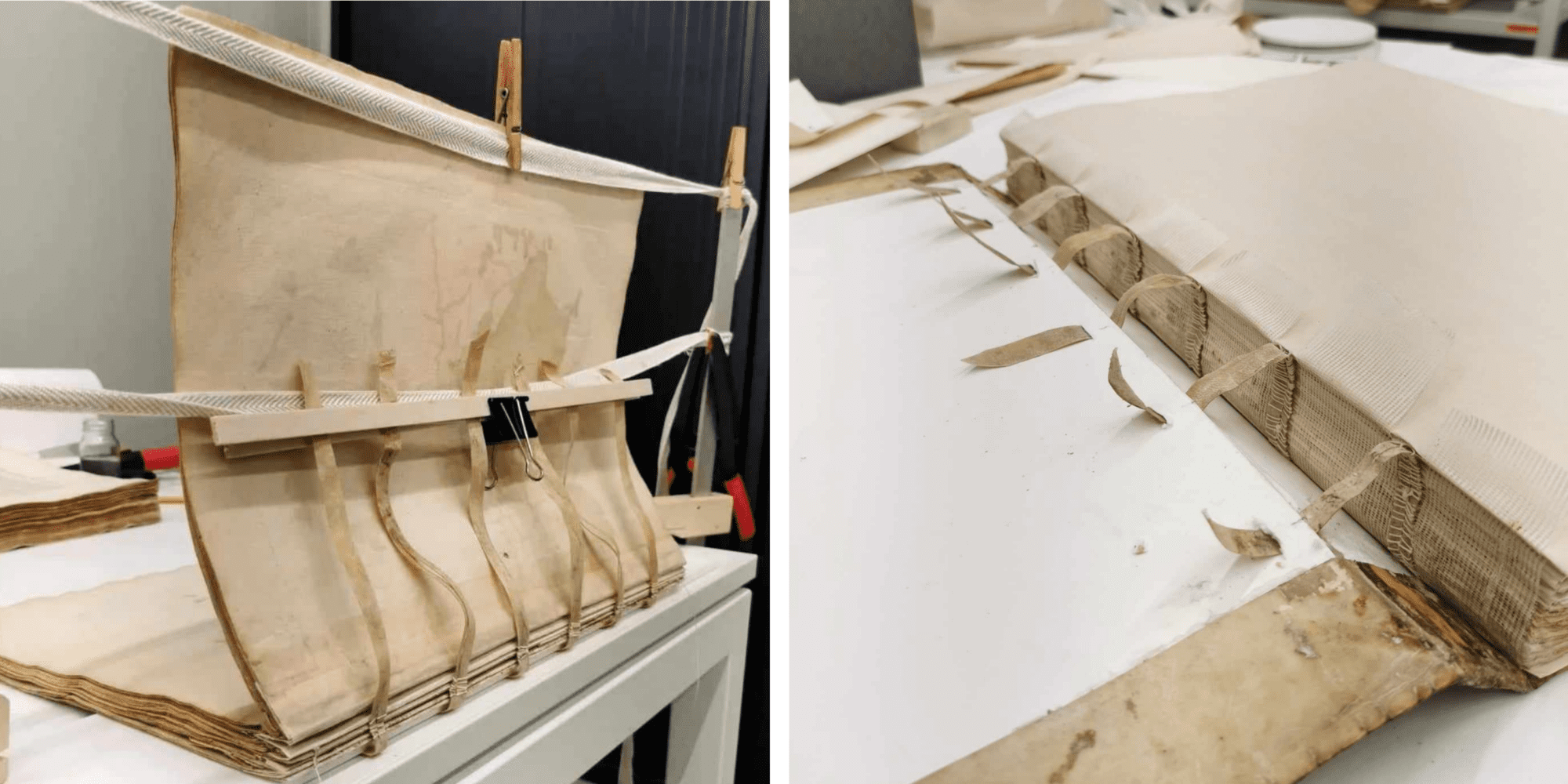
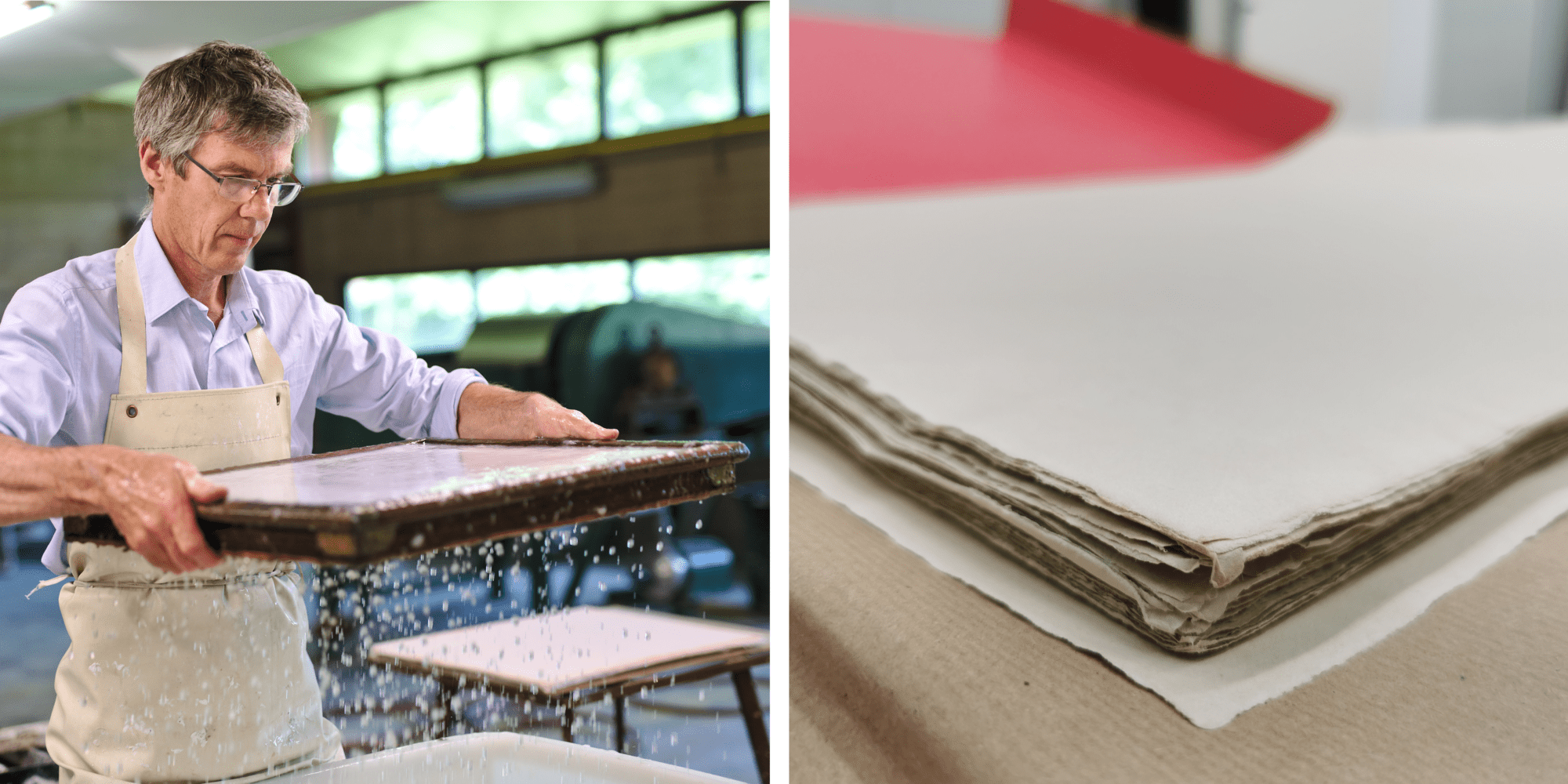
“A big problem was also the lack of endpapers. These are needed as protective pages at the front and back of the book. After a fruitless search in various art and paper shops, I finally had the paper artfully made by the Walloon master papermaker, Pascal Jeanjean. Based on a sample of the original paper (part of a flyleaf at the back of the book), he produced a similar paper for these books which, like the original sheets, are also handmade. Handmade paper can be recognised by the water lines or watermarks you see when you hold the paper up to the light.”
Pascal explained more about this himself:
“I’m going to try to give you an idea of how I made the paper. Because it was for the restoration of an old book, I chose to use raw materials similar to the original of the atlas’ paper, namely cotton rags and cloth. After treating the cotton rags in a bath, I started loosening the cotton into pulp in a Valley Beater, a modern version of a “Hollander”. This pulp thus forms the basis for the later paper. To create the right paper colour, mineral powders were added to the pulp. Calcium carbonate was added to increase its alkaline reserve.”
“After the right pulp was manufactured, a scoop window was chosen with a similar pattern of thin copper wires as in the original paper sample. Then, from a large bin, the paper was scooped. Subsequently, a pile of paper with felt interlayers was stacked on top of each other. Then, a large paper press was used to remove most of the water from the paper (60%). With intermediate sheets of special cardboard, the remaining moisture was removed from the sheets.”
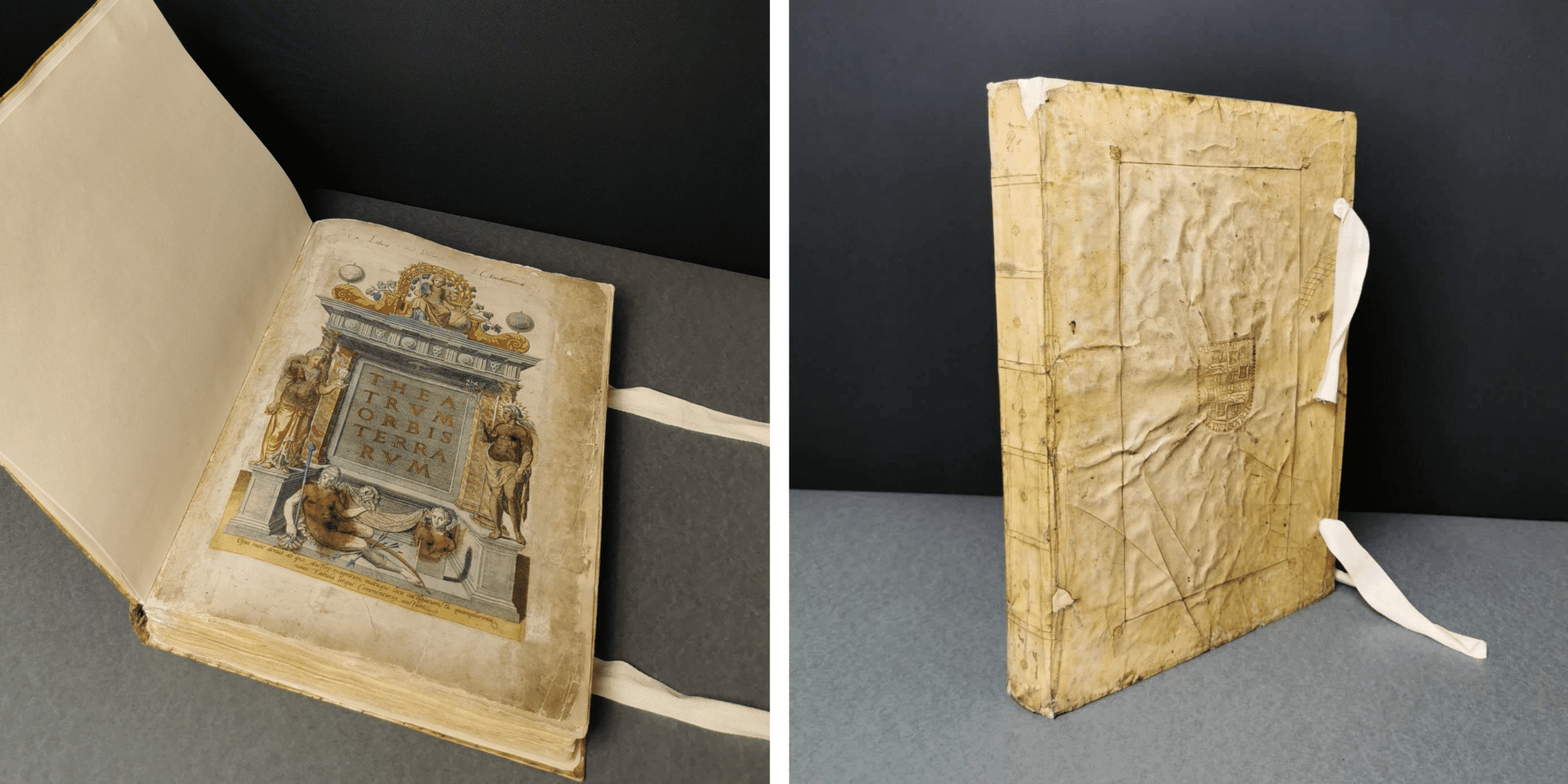
“The straps on which the book was joined were glued through and onto the cartons of the book binding during the rejoining of the binding and book block. This ensures that both parts stay tightly together. The new endpapers were glued to the inside of the boards (plates) of the book binding. Finally, new ribbons were added to the book binding.”